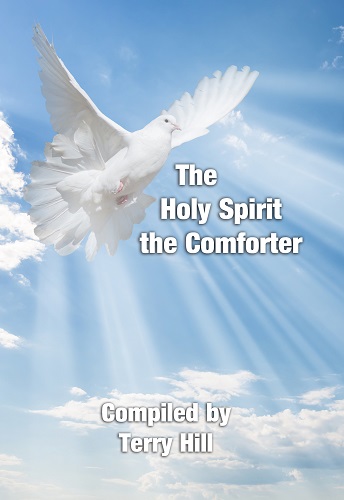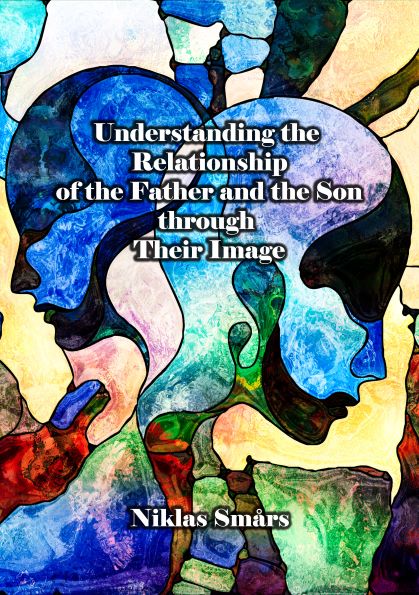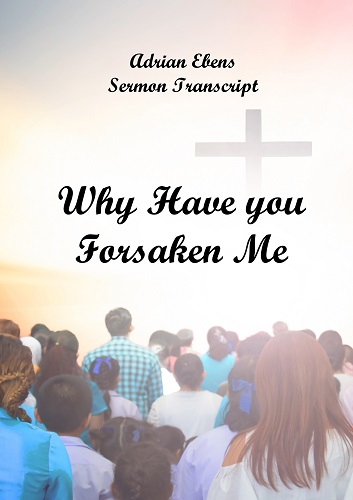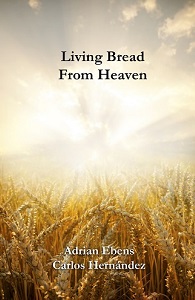Seven (7) Characteristics of the Covenants
Seven (7) Characteristics of the Covenants
This is a continuation of the blog series on the Two Covenants known as "Married to Another"
Up to now we have considered seven different examples of the two Covenants. Now we will explore seven characteristics of them before examining the seven divine love languages. Here is the short version summary. Notice that many of these characteristics overlap each other.
1) The Covenants were based upon blood sacrifice: This awakened gratitude, love and conviction leading to self-distrust, humble confession of sin and deep repentance. The blood points to Christ’s freely given divine life of Christ and His justification, forgiving, cleansing, saving power. (See John 1: 7-9; 3:16,17; 1 John 1:9; Ex 6:3-8; 20:1,2; Deut. 5: 15; Eph. 2:8-10)earthly tabernacle, (point of divine contact), was replaced by the heavenly tabernacle that ……was based upon “better promises”.
2) One Covenant was characterized by unbelief and the other by belief – the latter pointing to the faith and blessing of Abraham: We need to recognize the new covenant is an everlasting covenant even though it wasn’t ratified until the cross. (See Heb. 13: 20) The covenants are not matters of time but of condition (belief leading to willing obedience or pseudo belief (in reality unbelief) and broken promises).The New Everlasting Covenant is characterized by willing obedience to God’s Commandments
3) The new birth, symbolized by the reality (not the sign) of circumcision, was an essential part of the New Covenant.
4) The Covenants were founded on the 10 Commandment lamp and light, law of liberty and love: ……The 10 Commandments in Exodus 20 actually begin by specifying God’s saving power in ……delivering Israel from Egyptian bondage (Ex. 20:1,2). We all need reminding that God’s ……saving power (from spiritual bondage) is the basis of commandment keeping.
5) The earthly tabernacle, (point of divine contact), was replaced by the heavenly tabernacle that ……was based upon “better promises”.
6) The New Everlasting Covenant is characterized by willing obedience to God’s Commandments and is manifest in victory over sin: “The blessing of Abraham” is characterized by deliverance.
7) The Covenant was founded upon an oath/will promising a glorious inheritance.
Now we will explore these seven characteristics in greater depth.
1) They were both based upon Christ’s freely given life typified by sacrifices: The life of the sacrifice is in the blood therefore blood = life. Animal sacrifice prefiguring Christ’s freely given life in His “one offering”. This purposed to perfect the conscience of “them that are sanctified” - vitally connected with Him. The blood (divine freely given life of Christ) justifies and sanctifies. (Heb. 10:14: Ex. 24:7; Gen. 15:9,10,17).
Covenant of Mercy: God’s sacrificial act is an act born out of mercy toward His children. (Moses recognized the merciful nature of the Covenant (Deut. 7:9,12); the author of Kings (whoever that was?) recognized this (1 Kings 8:23; 2 Chron. 6:14); Nehemiah recognized this (Neh. 1:5); king David, Isaiah, and Daniel all recognized this. They understood God’s Covenant was based on faithfulness and mercy (Psm. 89:28; Isa. 42:6, 54:10; Dan 9:4). What greater mercy could be demonstrated than for God to give His only begotten Son for the life of the world? (John 3:16-18).
2) One Covenant was characterized by unbelief and the other Covenant by belief – faithful trust in God and His promises - the latter pointing to the faith and blessing of Abraham: The everlasting Covenant is a conditional Covenant and requires true-hearted belief which is made manifest in obedience to God’s Commandments “For what saith the scripture? Abraham believed God, and it was counted unto him for righteousness” - Rom 4:3; (See Heb. 4:1-11). Abraham’s belief was characterized by faithfully patterning his household after the LORD and obedience in his willingness to offer his son Isaac to the Lord. Abraham’s household was the epitome of God’s family kingdom. He was known by God and blessed by God. “For I know him, that he will command his children and his household after him, and they shall keep the way of the LORD and do justice and judgment: that the LORD may bring upon Abraham that which He has spoken of him.” Gen. 18:19. The thing “which the LORD had spoken of” refers to multiplying and blessing Abraham’s seed. Anyone who blessed Abraham, respected and modeled their families after his family of Godly order and submission would in turn be blessed (See Gen. 12:2,3). Anyone who cursed Abraham would be cursed (separate themselves from God and His covenantal blessings.) The fourth commandment points to family success and stability. It promises a blessing of lengthening of days “in the land” given by “the LORD thy God” suggestive of the everlasting inheritance in the earth made new upon all those who honor and obey their parents like Isaac obeyed Abraham. On one occasion when Jesus spoke of His Father as “the God of the living” He made reference to Isaac, Abraham and Jacob as examples of His sons (See Matt 22:32). The ultimate blessing of Abraham would come through connection with his promised “seed” which was Christ who was to come through his lineage (Matt 1:1,2,16,17). God’s covenantal “channel of blessing” shifted from Abraham to Christ the promised seed.
The kind of faith and belief in what God can do (call out from bondage, deliver from the enemy, protect, bless, and prosper) as witnessed in the life of Abraham is essential to keeping God’s commandments (See Gen 14:19,20: 15:1,5,6). The 10 Commandments specified in Exodus 20 actually begin in verse 1 and 2, not 3, with a reminder of God’s saving power and their inability to save themselves. In fact in relation to the Sabbath Commandment, it is interesting to note Deut. 5’s version is quite different to the wording in Exodus 20. In Deuteronomy the Sabbath commandment is not described as a memorial of creation but rather as a memorial of redemption. Again it announces “what God can do” anddid do through His saving power!!! (See Deut. 5:15). This points to anything but works salvation but points to the New!
We can believe whatever God’s Word says concerning the Covenants is so. It is not make-believe "legal fiction" it is a definite reality. (See Gen 15:6; Isa 55:11).
3) The new birth, symbolized by the reality of circumcision, was an essential part of the New Covenant: If a child remained uncircumcised he was cut of from the people and the covenant was broken (See Gen. 17:11, 14). This indicates unless one is born again (circumcised in heart Deut. 30:5,6) the Covenant is ineffective and redundant. The reality of circumcision is the sealing of righteousness in the heart by the Holy Spirit (Eph. 1:7-14). The sign of circumcision, made by hands, is a reminder of man’s attempt to work out the promise of God and his failure, a reminder that we can do nothing of ourselves to obtain righteousness and a warning of Abraham’s big mistake to put no confidence in the flesh. The supernatural new birth (the reality of circumcision, circumcision made by the Spirit “not made with hands”) is closely linked to righteousness of faith (firm belief) and keeping God’s Commandments. That’s why the three are an integral part of the New Covenant. (See Jer. 4:4; Rom 2: 25, 27, 29; 3:30; 1Cor. 7:19; Gal. 5:6; Eph. 2:11; Col. 2: 10-13). Abraham’s children are not exclusively Jews. Romans 2:28-29 For he is not a Jew, which is one outwardly; neither is that circumcision, which is outward in the flesh: (29) But he is a Jew, which is one inwardly; and circumcision is that of the heart, in the spirit, and not in the letter; whose praise is not of men, but of God (See Rom 3:2; 9:6-8; Heb. 12:22-24).
The outer court of the desert Tabernacle, represented the earth. Here the brazen altar (prefiguring the cross) and the laver (prefiguring the water of life for spiritual regeneration) is where conversion (new birth) takes place. (See John 3:3,5,14; Titus 3:5; Phil 3:3; Rom 2:25-29)
4) Founded upon the perpetual moral 10 Commandment lamp and light, law of liberty and love: The law was/is is part of both Covenants and there is no fault whatsoever with the law. Although it is only a limited reflection (photograph) of God the Father and Son, the law is still “perfect”. There is no fault in the law. “The commandment is a lamp; and the law is a light” and its reproofs instruct us “in the way of life” (Psm. 19:7; Prov. 6:23). Therefore in relation to the professed people of God, during Sinai and afterwards in their desert wanderings, God found “fault . . . with them”. And the “fault” is still with many of His professed followers today (Heb. 8:8).
“Though this covenant was made with Adam and renewed to Abraham, it could not be ratified until the death of Christ. It had existed by the promise of God since the first intimation of redemption had been given; it had been accepted by faith; yet when ratified by Christ, it is called a new covenant. The law of God was the basis of this covenant, which was simply an arrangement for bringing men again into harmony with the divine will, placing them where they could obey God's law.” Patriarchs and Prophets p. 371
The covenant which had existed by “the promise of God since the first intimation of redemption had been given” refers to the promise of “enmity” given to Adam and Eve at the fall in Eden. This was nothing less than the everlasting covenant. In the life of victory under the New Everlasting Covenant, the law is written on the heart (Luke 1:68-75; Heb. 8:10; 10:16).
5) The earthly tabernacle system, (a point of divine contact), gave way to the eternal heavenly tabernacle that was based upon “better promises”: Both Tabernacles were a point of divine contact. Yet the old earthly tabernacle/temple systems vanished: Aside from some of the items found in the Most Holy Place, like the 10 Commandments, by the time of the cross, both Old Testament era tabernacles (the Old Covenant desert Tabernacle and its services, and the Solomon’s temple in Jerusalem), vanished away. (Dan. 9:26; Luke 19:43; Matt 24:2). As Christ yielded up His life on Calvary’s cross, the relevance of the old system/temples came to an end. (See Matt 27:46-51). God never intended for these “glorious” yet less than “perfect” tabernacles to be of any permanent nature.
There are a few reasons why the New [Heavenly] Covenant is “better” and “much” superior to the Old. Firstly, because it was the source of “better promises” (Heb. 7:19,22; 8:6; 9:23; 10:34). Secondly, the New Covenant Tabernacle is better because it was “pitched” by God and will exist for eternity! Thirdly it was better because it is based upon the promise of what God would accomplish rather than the promises of men. Finally, it had a permanent nature because Christ the eternal Son of God, our crowned and anointed Priest-King is the central figure ministering in this tabernacle. (We will feature this more in the second study entitled, “Delivered from the Law”). Through His infinite sacrifice and ministry Christ the Prince of the Holy Covenant can and will accomplish in our lives what the Old pointed to but was powerless to accomplish. It goes way beyond “gospel fiction” it is to take away our sins not merely legally but as a reality! (Rom 1:16; 11:26, 27; 1 John 1:9)
6) The New Everlasting Covenant is characterized by willing obedience to God’s Commandments and statutes and manifest in victory over sin: “The blessing of Abraham” is characterized by deliverance, obedience and victory in Christ. (1 Cor. 15:57; 1 John 5:4; Rev. 15:2; Acts 3:26; Rom 1: 16,17; 11: 26, 27; Jude 24,25; 2 Tim 4:18.) There are blessings in obedience to God’s law of liberty which forms as a written contract in covenantal marriage between Christ and His bride. We are not only to believe but we are to “walk in the steps of that faith of our father Abraham” (Rom 4: 11-13). Through the empowering grace of the indwelling Christ, willing obedience is an essential part of the covenant.
“The covenant with Abraham also maintained the authority of God's law. The Lord appeared unto Abraham, and said, "I am the Almighty God; walk before Me, and be thou perfect." Genesis 17:1. The testimony of God concerning His faithful servant was, "Abraham obeyed My voice, and kept My charge, My commandments, My statutes, and My laws." Genesis 26:5. And the Lord declared to him, "I will establish My covenant between Me and thee and thy seed after thee in their generations, for an everlasting covenant, to be a God unto thee and to thy seed after thee." Genesis 17:7.” PP 370
7) The everlasting Covenant was founded upon an oath – the legal will of the Prince - promising an eternal inheritance and eternal life: The promise to Israel involved earthly Canaan (the “promised land”) – a type of the heavenly Canaan (Ex 12:25; Deut. 6:3; Joshua 22:4,5). This was a shadowy type of our glorious/eternal country and city homes in paradise that Christ has prepared for the overcomers that will inherit this upon His return (John 14:2,3). The future provisions prefigured in the shadowy earthly Canaan were included in the will of Christ the testator before His death (Heb. 9:16,17.) Now they will be imparted upon His return. Our future inheritance of our heavenly home is made certain by its inclusion in Christ’s testament or will that was made of force and confirmed after Calvary. These promises are unalterable. No man can alter His will or can add to or take away from these provisions! (Gal. 3:15; Eph. 1:7-14).
The next segment we will briefly consider the seven love languages of Christ the Prince of the everlasting covenant. These are not unrelated to the everlasting covenant. All 7 love languages blend into Christ’s covenantal other-centered agape love for His chosen lady and bride.





